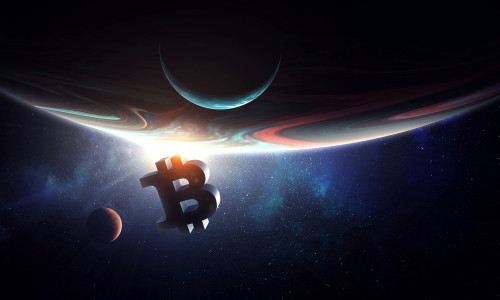Perthblog
Do Aliens Use Bitcoin?

As you will see below, my formative years were spent dissipating while reading tomes like The Hitchhikers Guide to the Galaxy.
Europa Will Be Bulldozed to Make Way for the Next Cosmic Superhighway!
We’re just sending the Europa Clipper to Europa, one of the moons of Jupiter. Clipper is an apt name coz there’s apparently a huge underwater ocean on the planet. That is a current reminder of the vastness of space, whose unimaginable size we can now start to imagine by checking out the uncountability of the objects we think we can see. How many is that?
One of the later theories to explain the Big Bang (now an obsolete concept bye the way) was that it was preceded by a hyper-rapid expansion of all the contents of the contemporary (whatever that means) universe to its presumed apparent size now. This theory, invented by one Alan Guth of MIT (where else right?) is (was) called cosmic inflation.
Hmmm is that the same as what the governments of the world spend all their time making it higher, so we will all be happier? Because then we’ll all be richer?
I’m trying to think myself into being a participant in one of those undoubtedly deep NASA strategy sessions where the eggheads ask The Question du jour: where shall we go next? Some possibilities:
- Visit the biggest planets? Too many to count and some of them are truly ginormous.
- Visit the biggest black holes: too many; too big; too weird; probably too fatal.
- Too much life to explore in one moonshot or even a trillion trillion of same.
- Too many things we just don’t understand (duh).
- The more categories of things in the NASA travel budget, the higher the global headline inflation, the more we need a global accounting framework like Bitcoin
Unnameables To Travel To
Too many thingamies that are incompressible, uninflatable, unlocalizable, too many incomprehensible Escher-like forms that we can’t navigate through no matter how many dimensions we’ve achieved in string theory.
- Too many forms of ghostly energy we never saw before.
- Trillions of black unwholes or unseeable jabberwockies? What about things we haven’t seen or dreamed of yet (and never will)?
So Many Categories We Never Thought of Before!?
Non-Living non-Carbonaeous Unlife ProFormas with NonCursive Chaining Codexes
When will we find pan-energetic unlocalables? How do we know to get there?
To prove their existence or infer it?
Is there something that is the same as vast but bigger in a highly different way?
That’s gotta be a fascinating discussion. Starting with, what is the budget, Joe?
Who Knows If the James Webb Map is Right?
Where do we aim for? What is the superlative of vast? How do we get there?
My theory is that that are so many things resembling monetary inflation out there. Just like your current government’s budgets. This time its inflation of nonlocalables.
We’re running out of objects to research because new ones keep appearing. That means huge budgets and lots of inflation, cosmic, monetary and comic.
Is it the telescopes that are the problem?
Bitcoin to the Rescue
What’s the nut? What’s the solution? Essentially, we need to give it to the accountants to figure out. Bitcoin and digital currencies have emerged to offer a way of tethering the runaway cosmological creation of value. NASA, totally up against the tide, is trying to do some inflation fighting. As Boeing shows, that isn’t working out very well.
AI and its offshoots are the latest way to accelerate the recognition of the process of value creation in the universe. But the horse is already out of the stable. Bitcoin is that latest vain attempt to forestall the phenomenon of cosmic and monetary inflation to which all aliens, us included, are totally subject.
The Singularity is not actually important because it doesn’t mean anything in and of itself. It’s the reification of the psychic drive by all intelligent beings, living or otherwise, to leave a huge mass of value behind, to show that we once actually existed. Bitcoin and its ilk aim to show how meaningful and valuable that rock is.
The key insight is that unless we can assign a real idea of the value we have created cosmologically, we haven’t done anything useful at all.
So, this chunk of value can be measured, admired eventually and revered for its divine unlocalizability.
NASA and the rest of us (i.e. the rest of the aliens) are merely trying to create a chunk of meaning recognized as value that we once called God and is now being subsumed into what we once called the Singularity and is now that chunk of unlocalizable value.
Once we can assign that chunk to trading platforms, we will be able to exchange and transform these Bitcoin blobs with everyone else out there that wants to be a player.
That’s what NASA is trying to move towards, but they are all merely faceless bureaucrats. That’s where the Musks and Trumps are aiming to play.
Who is the Man then?
When you subscribe to the blog, we will send you an e-mail when there are new updates on the site so you wouldn't miss them.
